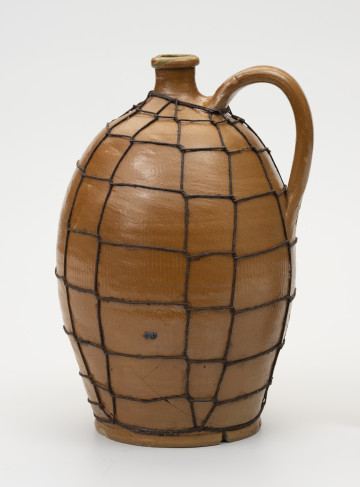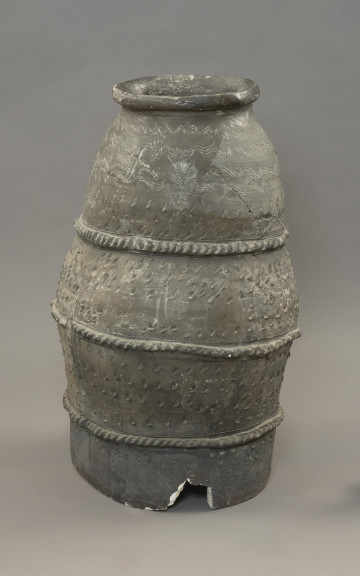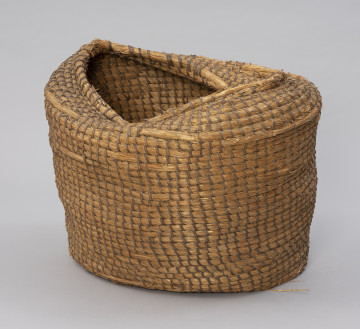
Bottle repaired with wire mesh
1850 — 1900
National Museum in Szczecin
Part of the collection: Folk ceramics
A resource vessel in the form of a large double-necked pot is a useful household item and was once very popular. They stored a variety of liquid, loose and solid products. The shape of the pot on display, with its very wide spout and capacious interior, suggests that it was used in the household, if only for pickling cucumbers. The material used also speaks in favour of this form of use. Stoneware is a variety of ceramic with high mechanical strength and resistance to acids and low permeability. Investing in a large, practical pot used to be a significant expense for most rural households, so pots that broke were not thrown away immediately. An extension of their use was to wire the vessel, i.e. to wrap it extremely tightly with a wire mesh so that it compressed the parts that were spreading at the point of breakage. It may have been simple, but it was not at all easy to make a good interlacing to strengthen the vessel and at the same time prevent it from cracking further. This type of vessel repair was usually carried out by wire workers, small craftsmen, usually itinerant, who also made small household items from wire, such as mouse traps, animal cages, clasps or toys. When they reached the village, usually in its main square called nawsiem, they would set up their workshop and the housewives would bring cracked pots, which they would wire for a small fee. Iwona Karwowska
Author / creator
Object type
storage vessel
Technique
throwing (pottery technique), glazing
Material
stoneware
Origin / acquisition method
donation
Creation time / dating
Creation / finding place
Owner
Muzeum Narodowe w Szczecinie
Identification number
Location / status

1850 — 1900
National Museum in Szczecin

476 — 1250
National Museum in Szczecin

1900 — 1950
National Museum in Szczecin
DISCOVER this TOPIC
Museum of King Jan III's Palace at Wilanów
DISCOVER this PATH
Educational path